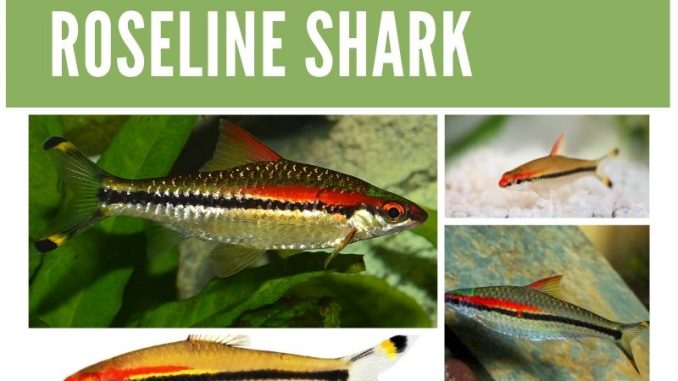
Some fish grab your attention right away. Roseline Sharks do this with their vibrant colors and darting movements. They definitely contribute to an active tank.
These are attractive fish that fit into a community aquarium well. If their environment remains stable, they are easy to care for too.
The main thing to consider is how much space you have, as this species grows large and needs lots of open swimming areas.
We will cover everything you need to know about caring for Roseline Sharks, such as their perfect habitat, their preferred diet, breeding techniques, and much more…
TABLE OF CONTENTS
Roseline Shark Facts & Overview
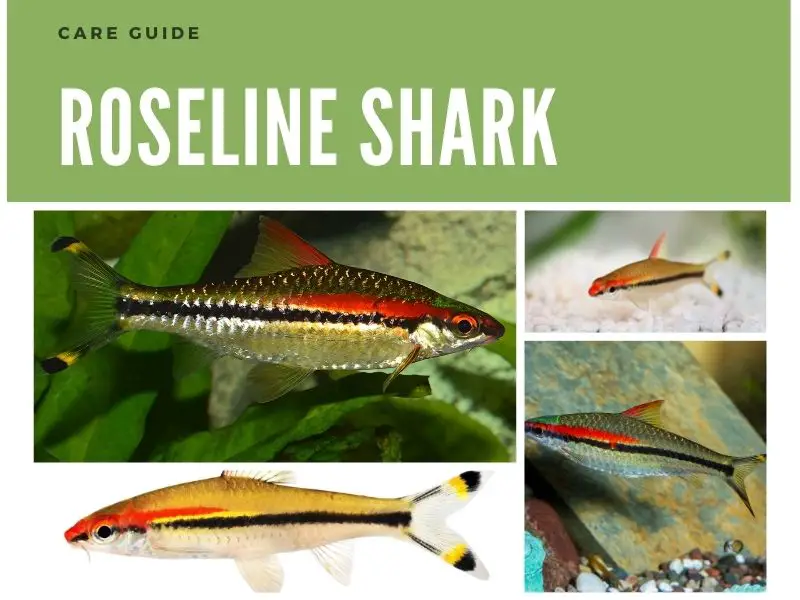
| Category | Rating |
| Care Level: | Easy |
| Temperament: | Peaceful |
| Color Form: | Silver, red, and yellow |
| Lifespan: | Up to 5 years |
| Size: | Up to 6 inches |
| Diet: | Omnivore |
| Family: | Cyprinidae |
| Minimum Tank Size: | 55 gallons |
| Tank Set-Up: | Freshwater: dense vegetation and open swimming areas |
| Compatibility: | Peaceful community |
You can find Roseline Sharks going by many other names, such as denison barbs, Denison’s barbs, Red-line Torpedo Barbs, or Miss Kerala.
Their scientific name is Sahyadria denisonii and they are part of the Cyprinidae family. This family contains lots of popular aquarium fish including barbs, danios, and rasboras, among others.
These freshwater fish originate in India, where they live in rivers and streams with fat-moving water. The most notable populations are around a mountain range called the Western Ghats.
Roseline Sharks grew in popularity as an ornamental fish in the late 1990s, having been exported from India. Since then, their numbers have declined.
Unfortunately, the species is now listed as endangered. Populations are low in the wild and there are fears that Roseline Sharks are being over-exploited in the aquarium trade.
Efforts are being made to extensively breed Roseline Sharks in captivity, to restore that numbers. These attempts have had limited success, even though it has been tried across the world.
Breeding has been more successful with the use of commercialized facilities and a standardized process.
You can still commonly find the species in pet stores; you shouldn’t have to search for too long to find some.
Prices range from $10-$30 depending on the size of the fish. These will likely increase if numbers continue to reduce.
A healthy Roseline Shark can live for up to 5 years in a healthy environment where all its needs are being met.
When buying some, always examine the stock carefully. Look out for signs of injury or disease. Physical wounds should be obvious, but diseases can present in a number of ways, such as through their behavior or a change in color.
Typical Behavior
Sharks have been given a bad reputation as aggressive fish. Luckily, Roseline Sharks are actually a species of barb that are generally considered to be peaceful fish.
They get on well with other species and are commonly kept in a community aquarium.
This doesn’t mean that they will never show aggression though. Sometimes they squabble with tank mates and might chase them.
This is usually because their tank isn’t big enough. They are at their most peaceful when they have plenty of space in a large aquarium.
Roseline Sharks are fast and active swimmers that might be too boisterous for timid slow-moving fish.
This is one of their selling points though, their active nature makes them very interesting to watch. Your aquarium will be full of energy.
They enjoy being in a group and can often be seen darting around the tank as a shoal. A Roseline Shark kept singly would get very lonely.
Most of the time they occupy the middle levels of the tank, but they could stray anywhere, especially when feeding.
Appearance

Active fish are usually quite attractive simply because their movement makes you want to keep watching them. Pairing an active nature with a colorful body creates a truly beautiful fish.
Roseline Sharks are the combination of both, displaying subtle hints of color as they dash around the tank. This display is even more impressive in a group.
Their body is long and torpedo-shaped. They have small fins, the largest of which being the forked caudal fin at the rear. At the front is a large black eye on their head.
A fully grown adult will reach about 6 inches, giving them the strength they need to be powerful swimmers.
The main color of their body is silver, but a black lateral line runs horizontally all the way along the middle. Just above this black line is a stripe of bright red, but this only covers the front half of the body.
A thin red stripe can also be seen running along the top of the dorsal fin; the rest of the fin is clear. In fact, all the fins are clear, except for two dashes of yellow, one midway along each of the forks of the caudal fin.
Most specimens will display an emerald green on their head. This is more common in mature individuals.
Sexing Males and females can be difficult as they are very similar in appearance. Females are slightly larger with slightly duller colors, but these factors are tough to gauge.
Habitat and Tank Conditions
Roseline Sharks are endemic to India – this is the only place that native populations can be found in the wild. They live in the Western Ghats, a large mountain range parallel to the western coast of the Indian Peninsula.
More specifically, the species is endemic to the Achankovil, Pamba, and Chaliyar rivers. These are in a subtropical climate and have warm water with a fairly neutral pH.
Populations here are on the decline, but attempts are being made to help them recover.
Roseline Sharks stick to the shallows where there are lots of rocks surrounded by thick vegetation, which creates a natural shelter from bright lights beaming down from above.
The currents here are also relatively strong, which maintains highly oxygenated water. This supports the abundance of plant life.
The best way to keep your Roseline Sharks healthy is always to recreate their natural habitat as best as you can. This includes replicating the physical environment and the water chemistry.
This isn’t too difficult to do, we outline how below.
Tank Conditions
Starting at the bottom of the tank, create a layer of a soft, fine-grained substrate like sand. These barbs are often seen around the substrate, perhaps searching for food, so a soft substrate will reduce scratching.
On top of the substrate, you can add decorations as you please. Make sure that you leave plenty of swimming space available for these fast and active swimmers.
Vegetation is another important addition to your tank. Roseline Sharks would be surrounded by live plants in their natural habitat, they need them to retreat to when stressed.
You will need plant species that stretch up into the water column so that they are easily accessible.
Roseline Sharks can tolerate a range of conditions, so they should stay healthy if your water’s parameters stay within their preferences.
The temperature should be between 60°F and 77°F, pH should be 6.5-7.8, and water hardness should be 5-25 dGH.
This species enjoys moving water. A powerful filter outlet should create a strong enough flow. You can use an air pump if you want to create a stronger current.
You shouldn’t need any other equipment; standard aquarium light is fine.
Your tank will need a lid though. It is possible for Roseline Sharks to jump out of the water.
What Size Aquarium do they need?
Tank size can be quite restricting when aquarists want to start a tank with Roseline Sharks. They become quite large when mature and they need plenty of space for swimming.
A small group can be kept in a 55-gallon aquarium. You will need more space for larger groups of Roseline Sharks or a community of many species.
The more space you provide, the happier these barbs will be, and the less likely they will show signs of aggression.
How Many Can be kept per gallon?
Adding extra fish will require extra space. Try to ensure that there are 6-10 gallons of water for each additional fish.
Again, the more space you can provide, the better.
Tank Mates
You can keep Roseline Sharks in a community aquarium without problems if you select their tank mates carefully.
They should be kept with similar species; fish about the same size are active swimmers. Small delicate fish will likely feel intimidated by a Roseline Shark’s energy and become stressed.
Species that are significantly larger than Roseline Sharks could injure or eat them.
This still leaves lots of possibilities. For example, you could try danios, large tetras, rosy barbs, tiger barbs, yoyo loaches, zebra loaches, or kribensis cichlids.
There are many more options, giving you the freedom to design an aquarium that suits you.
Invertebrates make great tank mates; many aquarists forget that they are an option. There are many popular species of shrimps and snails that can live peacefully alongside Roseline Sharks.
Always do your research on each species that you want for your setup to check compatibility. Make sure that your aquarium is big enough to fit your community.
Can You Keep Roseline Sharks Together?
These fish should always be kept in a group. They naturally shoal and will move around the tank in unison. This can be an impressive display and show off their color.
A single Roseline Shark would get lonely. It would be more likely to become stressed, making it prone to picking up disease or succumbing to other health issues.
Aim for a group of at least 6. They will enjoy being in larger groups, but you may not have an aquarium large enough.
Diet
Feeding times are easy because Roseline Sharks are omnivores; they will eat virtually anything that you drop into the aquarium.
In the wild, they would naturally eat algae, small invertebrates, and insect larvae. There are similar foods available for feeding in captivity too.
The most convenient option is to buy dried foods like flakes and pellets. These are cheap and easy to store, plus they are found in pretty much every pet store.
However, most of the nutritious value of these foods is lost during the manufacturing process.
Providing a balanced and nutritious diet is crucial for maintaining the health of your fish, so never solely feed them dried foods, always supplement them with something full of nutrients.
Live and frozen foods are good ways to do this and all the nutritious value is preserved. Bloodworms, brine shrimp, and daphnia are some good examples. These are better at replicating Roseline Shark’s natural diet too.
Green vegetables are another way you can mix up their diet. You can chop up small pieces of things like broccoli, zucchini, or spinach that you have leftover in your kitchen.
A varied diet doesn’t just keep your fish healthy; it helps to show off their colors too. Foods containing carotenoids are particularly good at maintaining the vibrancy of your fish.
Only feed your Roseline Sharks an amount that they can easily finish within two minutes. Do this a couple of times a day.
Remove any uneaten food before it gets a chance to rot and lower your water quality.
Care
Caring for Roseline Sharks is pretty simple. They do not have any special requirements and their preferred environment is easy to create and maintain.
However, they do need a consistent internal environment, so beginners should only try them if they feel confident and have done enough research.
We have already discussed how to set up their tank, your job is to keep it clean while they are living in it. This mainly involves performing regular partial water changes and wiping away excess algae.
Use a water testing kit each week to check that the water parameters are at the right levels. This enables you to respond quickly before your fish become ill. Check that all of your equipment is working properly as well.
Roseline Sharks are not particularly prone to disease, but that doesn’t mean they won’t get ill.
Disease thrives in poor water conditions, so maintaining a clean aquarium will help to prevent an outbreak.
Sometimes, a disease is introduced to an environment when new fish or second-hand equipment is added. Quarantine new tank mates and clean old equipment before adding them to your setup.
There aren’t any species-specific diseases that you need to worry about, but a common freshwater pathogen is ich.
This ectoparasite presents as white spots along the body and may cause a loss of appetite and flashing.
If you spot an infected fish, quarantine it in a separate tank in an attempt to prevent the spread of disease. You can treat it in isolation until it recovers and is ready to be returned. Do this if you spot any type of disease.
Nowadays there are treatments in stores available for the most common aquarium diseases.
Breeding

Roseline Sharks are an endangered species, which suggests that they aren’t the easiest fish to breed in captivity.
This is half true. There has been a success when breeding these fish in commercial systems, but it is incredibly rare for them to breed in captivity at home.
Essentially, these means don’t get your hopes up if you’re trying to breed them yourself. If you want to start a breeding tank, pick a different species.
Commercial breeders are more successful because they use hormones and large complex setups. This isn’t possible in an average home.
If you’re still determined to try, there are a few tips to help you.
Spawning is more common in larger groups of at least 15. Gradually lowering the pH to 6.5 may help to trigger spawning too.
Thick vegetation appears to be crucial. Java moss has been reported to be important during spawning, and other plants help to protect the eggs/fry.
If you manage to get to the point of raising the fry, the safest course of action is to separate the parents in case they eat them. The parents don’t seem to exhibit any parental care.
They will need to be fed small foods like infusoria until they reach a larger size.
There is very little information on this topic, so make sure that you share your story if you are successful at breeding your Roseline Sharks.
Are Roseline Sharks Suitable for Your Aquarium?
There’s a plethora of freshwater fish available for home aquariums so it can be difficult for a species to stand out. Roseline Sharks definitely make themselves known with their bright colors and active lifestyle.
It is easy to design a perfect environment, and if you are able to maintain it, care will be relatively simple.
The biggest problem you will face is ensuring that your tank is big enough. These fish reach 6 inches and need plenty of swimming space.
You may find yourself frustrated if trying to breed them, but you can still enjoy their beauty.
Roseline Sharks are an excellent choice for anyone looking for fish to liven up a tank without demanding much of their time.
What does your Roseline Shark aquarium look like? Let us know in the comments below…

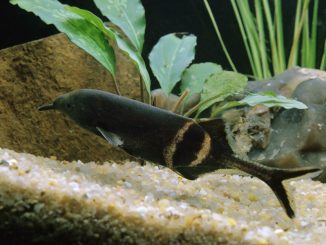
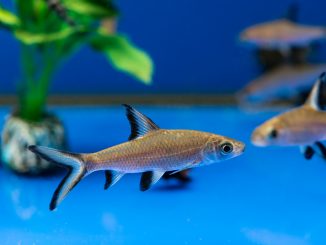
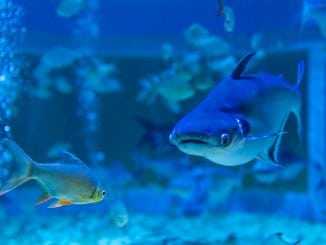
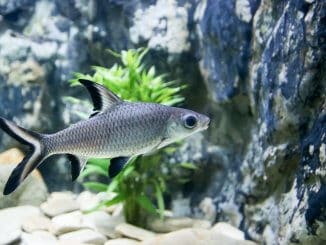
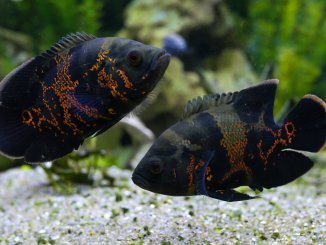
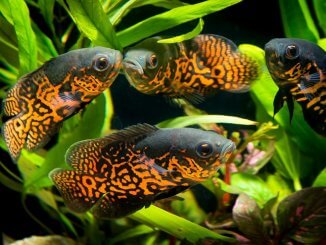
Help, I’ve had an apparently healthy and happy roseline sharks in my 3.5ft aquarium for a year. I’ve only just seen that minimum tank size is 4ft. This is not possible fir me. Should I get a companion for my shark or should I leave well alone? He’s in a community tank and doesn’t bother anyone else and they don’t bother him. Should I get 1 more or 2 more, or no more?